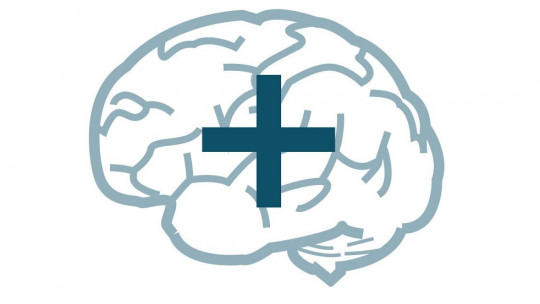The P factor of psychopathology is a proposal by psychologists Avshalom Caspi and Terrie Moffit, who suggest that psychiatric disorders have a common etiological basis and not specific or differentiated (as traditionally understood).
Next We will see where the P factor hypothesis comes from in general psychology and what it proposes.
Diagnosis in psychiatry: categorical model and dimensional model
As we know them now, diagnoses in psychiatry have a recent history. This history has been especially marked by the presence of the North American model of psychiatry, whose highest representative is the American Psychiatric Association (APA, for its acronym in English).
Every year, the group of specialists assigned to the latter publishes a diagnostic and statistical manual (DSM), where a series of manifestations known as “mental disorders” are categorized and described.
The above is relatively recent (it formally began at the beginning of 1950) and currently constitutes one of the most used criteria to understand and treat these manifestations Furthermore, over time, its criteria have been modified and updated according to the needs produced within the context itself.
One of the most significant and recent changes has occurred under the need to expand the diagnostic criteria, mainly due to growing doubts about the specificity of each disorder. In the following paragraphs we will develop in more detail what this change consisted of.
The categorical model
As we have seen, it was in the second half of the 20th century when the first Diagnostic and Statistical Manual of Mental Disorders of the American Psychiatric Association was published. What was initially consolidated as a compilation of research on psychopathology, soon It became one of the most used diagnostic and clinical guides around the world
At least until the first four versions of this manual, the tendency had been to define clinical entities in a specific and differentiated manner. That is, just like physical illnesses, each mental disorder would have its own criteria, symptoms, course, prevalence and a set of particular characteristics Due to this categorization exercise, this is known as a “categorical model”.
However, as time went by, it became increasingly difficult to sustain this model with the necessary rigor: it became evident that what was defined as a specific mental disorder had a close relationship with one or more disorders. This relationship between one and the other was described under the medical term “comorbidity.” which means precisely “presence of one or more diseases or disorders in addition to the primary one.”
Not only this, but the comorbidity turned out to be sequential, meaning that, over time, many diagnoses ended up triggering others. And this was repeated very frequently among people who attended psychiatric consultation.
In addition to the above, some studies showed that there were diagnoses with a notable and greater comorbidity than others For example, personality disorders had excessively high rates (about 60% of people with personality disorder diagnoses have comorbidity with mood diagnoses).
These figures left doubts about the specificity of the classifications, in addition to having obvious clinical consequences: many people, instead of having a single diagnosis that would allow them to understand and modify their discomfort, obtained two or more; which could represent more harm than benefit.
Furthermore, the high rates of comorbidity meant that the decision about whether it is one disorder or another (and the subsequent psychological and/or pharmacological intervention), far from falling on empirical and objective evidence, It fell to the personal discretion of the professional ; an issue that was increasingly criticized by the community of specialists and those affected.
The dimensional model
The development of the categorical model indicated that it was increasingly difficult to sustain a differentiated way of defining and treating diagnoses in psychiatry. Far from being an entity with distinguishable and particular characteristics, seemed to be a broad spectrum of manifestations that could hardly be separated
Consequently, the American Psychiatric Association itself, in its fifth version of the diagnostic and statistical manual, defends the need to create a dimensional model. This would allow diagnoses to be made using broad criteria that, in turn, allow us to understand the manifestations in a multifactorial manner
The above raises an important question for psychopathology specialists: whether, contrary to what we thought, mental disorders are not specific but rather have a high comorbidity rate; This probably means that there is a broad phenotypic structure in their genesis.
From there, different investigations took on the task of questioning the categorical model as well as investigating and expanding the dimensionality of the diagnosis. One of the most representative in the field of psychopathology is the proposal of the P factor
The P factor in psychopathology: a common structure in psychiatric diagnoses?
Avshalom Caspi and Terrie Moffit, along with their collaborators, published a study in 2014 where they conducted a multivariate analysis to evaluate a new hypothesis about the underlying structure of 10 common mental disorders among young adults (ages 18 to 21).
Using data from a previous multidisciplinary health study, the authors examined the structure of psychopathology considering dimensionality, persistence, coexistence and sequential comorbidity of mental disorders over 20 years.
In their research they conclude that mental disorders can be summarized according to three general dimensions: internalization, externalization and thought disorders
The first dimension is related to mood diagnoses (such as depression or anxiety), the second is linked to diagnoses of social behavior (such as borderline or antisocial personality) and substance abuse; and the third is related to the manifestations of psychosis.
The previous dimensions would be supported by a general element or condition that contributes significantly to their structuring. This element is called “Factor P” (by analogy to the concept of “Gactor g” in intelligence) and It is caused by genetic activity, but also by family history depression, anxiety, psychosis, antisocial or substance abuse disorders. Furthermore, the same factor may be related to potential risk elements such as a history of mistreatment or abuse during childhood.
To put it another way, the authors consider that the P factor, as a common structuring factor in different psychiatric diagnoses, is related to higher levels of life deterioration, a greater history of mental disorders in the family, a higher rate of negative stories during vital development, and largely compromised early brain function
Thus, it is a common element in the origin, development and absence of disorders; which leads the authors to defend a “transdiagnostic” approach in psychiatry.









